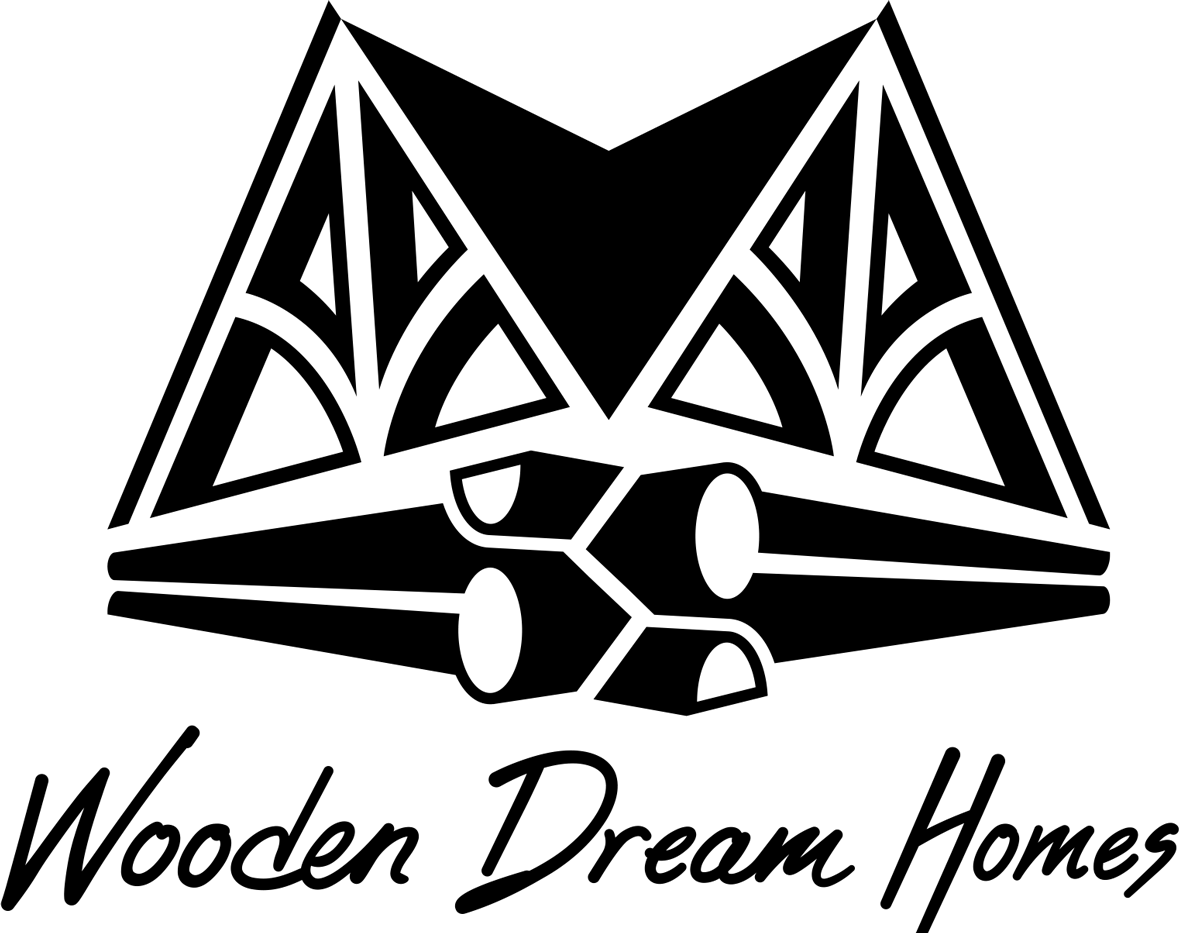Terminology
Timber Framing System Terminology
What's the difference between a Bent and Bay System and a Post and Beam System?
The term Bent and Bay System has remained primarily the same in the industry since the beginning of timber framing systems. This refers to a construction process where individual bents are created and raised into place (refer to diagram A). The spaces between the bents is referred to as bays. This style was created for ease of manual erection of a frame. Each bent can be assembled on the ground and raised into place by man, horsepower, or modern-day crane. They are then connected together with plates and girts.
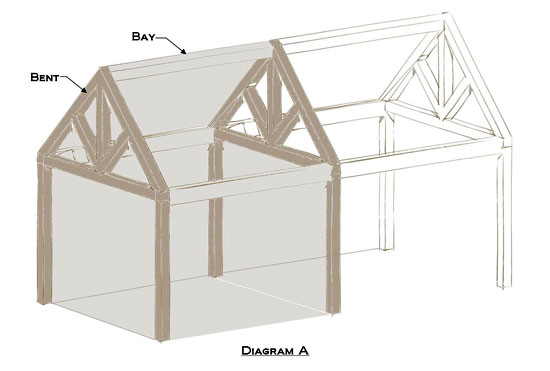
The term Post and Beam has changed over time and has several different meanings it depends on who you are receiving your information from. Wooden Dream Homes considers Post and Beam a style of timber framing where the traditional Bent and Bay System is not used (refer to diagram B). The traditional joinery methods are still used, but the traditional layout method of the Bent and Bay system is abandoned, lending to a more of free-form timber frame style.
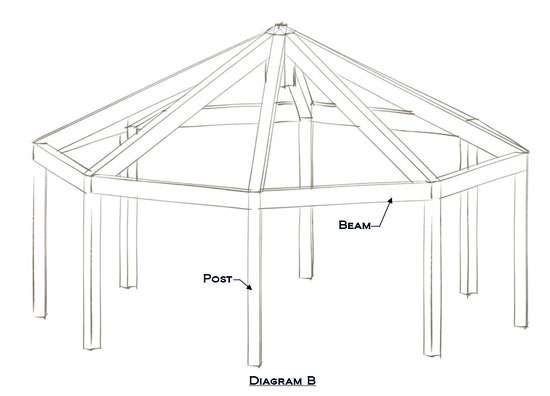
Primary Joinery:
Mortise: The most commonly used joinery in timber framing systems. The mortise is the notching into a post or truss plate to receive the tenon. Used in conjunction with a tenon, this joint resists both gravity and lateral loads.
Tenon: The tenon is used in conjunction with the mortise. The tenon is the removal of end material of a post, plate, brace, or girt to fit into a mortise joint.
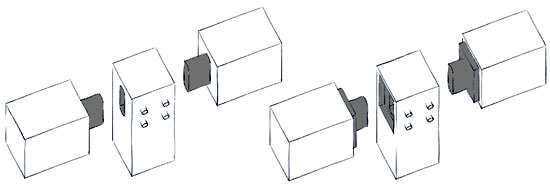
Housing: Creates a secondary edge on a tenon or dovetail to increase the gravity load capabilities of a joint. Housing can be fully concealed or exposed, depending on the design preferences of the owner.
Dovetail: Dovetail joints are strictly used at gravity-load conditions, such as rafters, purlins, and joists. The ends of these are shaped to slide into a pre-cut slot within the plate. The connection has a back cut to resist pulling out of the plate.
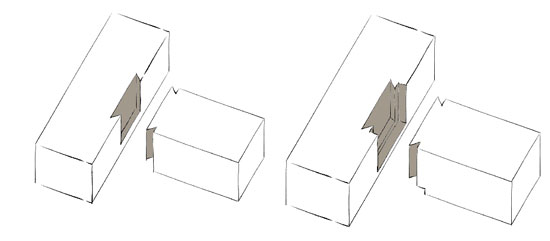
Bracing: Braces are used as the primary element to resist lateral loads in a timber frame. Braces are used at the horizontal to vertical member transitions.
Scarf Joint: A scarf joint is used when a horizontal member, primarily a plate, is so long that two or more individual members are required to meet the length requirements. In timber frame joinery, the most structurally sound connection when two plates need to be joined is to connect the plates beyond the post instead of on the post.
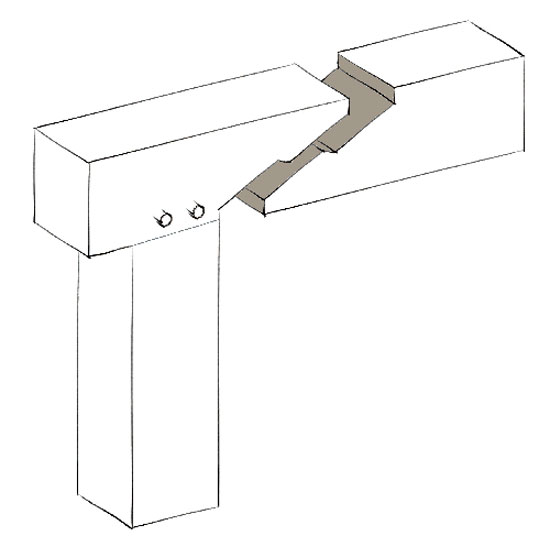
Secondary Joinery:
Shoulder Joint: Shoulder joints are used where a top plate and bottom plate of a truss meet to help resist the outward thrust created on an angled connection created by roof loads. The bottom plate of the truss is notched to receive the notched end of the top plate.
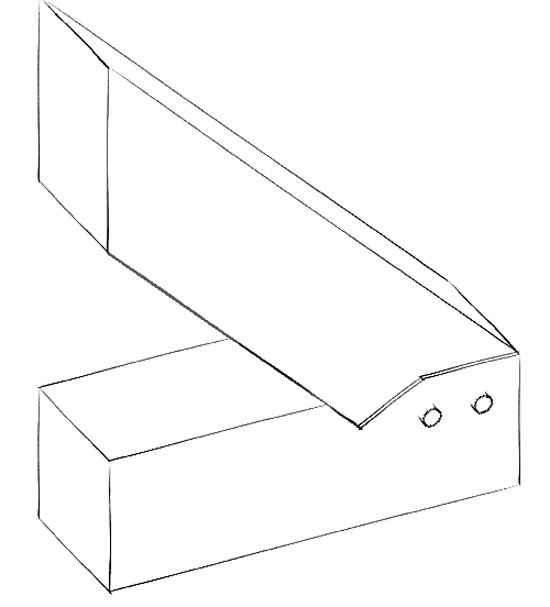
Half Lap: 1/2 laps are used to join the top plates of a truss. It's a simple joint where the end of each plate is removed to allow the ends to overlap each other.
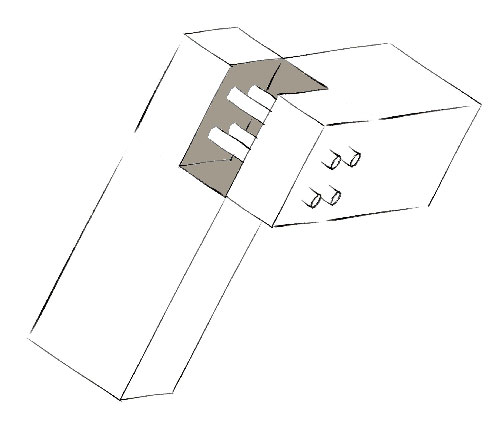
Spline: Splines are used where more than three members are coming into a single connection point. Two horizontal members can use the standard mortise and tenon joint into a post. The other two members have a simple house connection on the ends onto the post to take care of the gravity loads. A spline is cut thru the post and into the top or bottom of the other two horizontal members and those members are pegged to the spline to resist the pulling out forces on the connection.
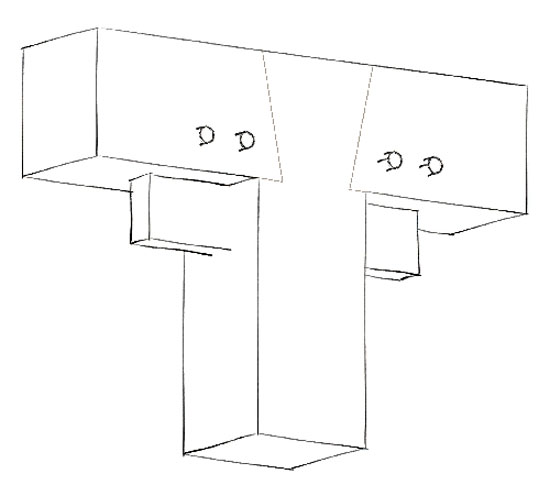
Chamfer: A chamfer is a beveled edge of a member. A chamfer was originally used at the end of tenons to help in the fitting into a mortise. In today's timber framing systems, it is used as a decorative element.
Member Terminology:
Post: Vertical members in a timber frame.
Plate: Primary horizontal members found at the floor, roof framing planes, and top and bottom members of a truss. Used as a connection between posts, bents, and trusses to receive joists, rafters, or purlins.
Girt: Secondary horizontal members used in a timber frame, found between the floor and roof framing plates. Used as a connection point for exterior veneer, or window and door headers.
Purlins: Framing elements between plates of a truss for roof veneer connections.
Rafters: Framing elements running parallel with plates of a truss connecting ridge plates and eave plates. Used a connection point for roof veneer.
Joists: Horizontal framing elements between plates at floor line for floor supports.
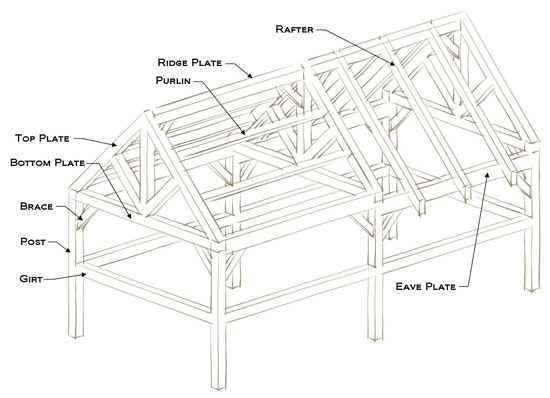
Other Terms:
Gravity Load: Vertical loads created by weight of timber frame members and loading of floor or roof system. Includes snow loads.
Lateral Load: Horizontal or angled loads created by angled roofs, wind, or seismic loads.


